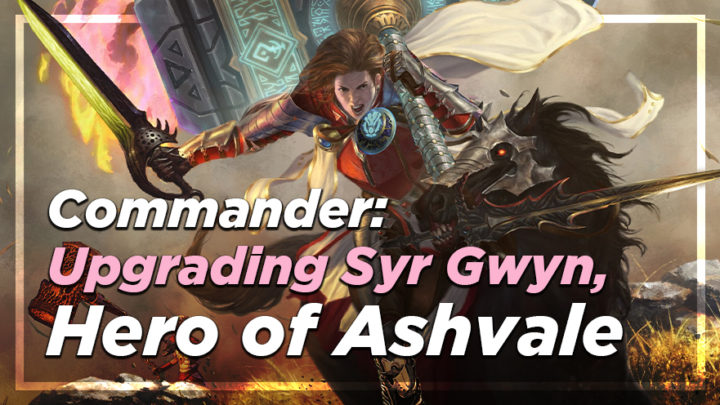Although building new decks and trying new Commanders makes up a large part of the fun when it comes to new sets, updating old decks and trying to make older cards more playable is also rewarding in its own way.
Like many people, I’ve been brewing with the new cards in my search for the most powerful way to play equipment-based Voltron. Before I really got locked in on a deck I’d want to play for a while, I decided to revisit Syr Gwyn, Hero of Ashvale.

Syr Gwyn, released in the Throne of Eldraine Brawl decks, was (for a year, at least) the premier option when it came to Mardu equipment builds that want to draw cards. I built her at the time, and in my upgrading for Commander article, I covered the strengths and weaknesses of the card and how I intended to build her.
During the past year, as the format has continued to increase in velocity and consistency, Syr Gwyn’s weaknesses really started to show. She gets taxed out quite easily, and she’s so expensive to recast that I ended up deconstructing her in favor of other options.
It’s been a while since Throne of Eldraine, though, and there are now a bunch of new cards that Syr Gwyn can take advantage of. Today, I’ll go over my thoughts on her viability, and what the new cards can do for her. Can new tricks refresh an old deck, or is it time to put it out to pasture?
The Challenges of Syr Gwyn
As a six-mana commander, Syr Gwyn faces a few challenges. Essentially, they can be reduced to:
- Lacking haste means she is vulnerable to removal and board wipes
- As a six-mana creature, she can be increasingly hard to keep in play
- Since she is capable of one-shotting an opponent, she’s often a magnet for removal
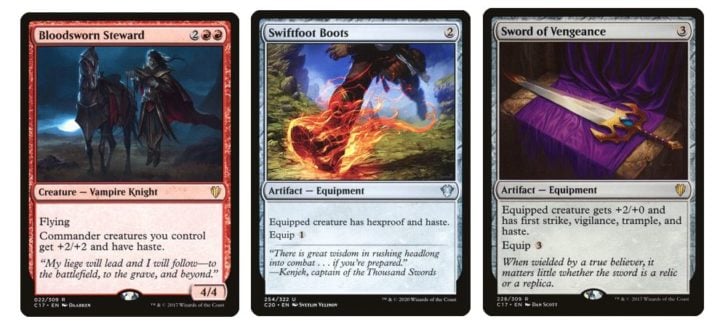
In my original build, I used cards like Bloodsworn Steward, Swiftfoot Boots, and Sword of Vengeance as extra ways to grant haste.
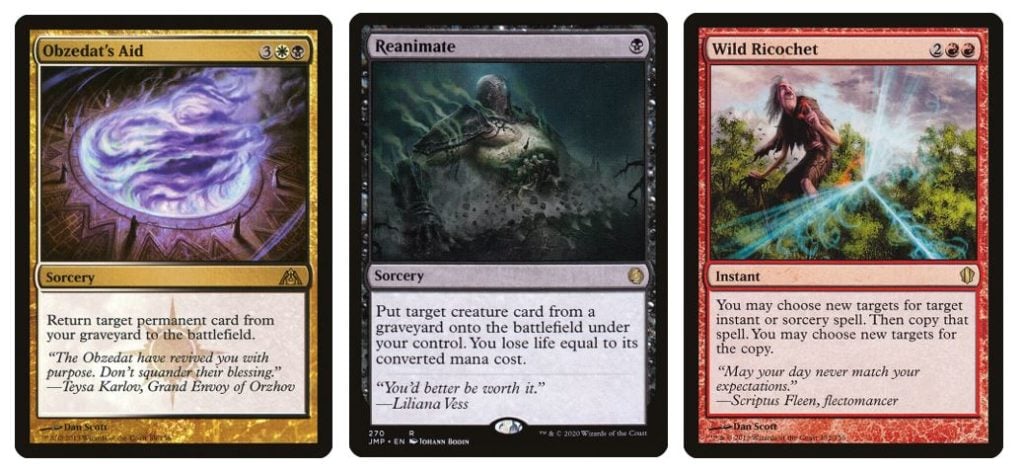
Obzedat’s Aid and Reanimate pulled a lot of weight to make the deck more recursive and flexible, and cards like Wild Ricochet and Bastion Protector did a lot of heavy lifting when it came to protecting Syr Gwyn in the first place.
When rebuilding the deck with updates, I kept these particular challenges in mind, as they are the biggest factors which inform the success of a deck that’s not so cookie-cutter in its approach. A glut of new cards can be super exciting, but they can also prove overwhelming; adding new cards without a plan just because they’re “good” might end up leaving you with a deck that’s aiming a little off-target.
New Cards, New Tricks

2020 saw a lot of upgrades released for this deck, and revisiting it was actually a real joy — at least until I had to make cuts! You can find the full decklist here if that’s your jam; otherwise, let’s get into the nitty-gritty of it.
Out:

In:

Sylvia and Khorvath are still great includes, don’t get me wrong. They both draw “a card,” and they offer things the deck wants: both legends can have double strike, thanks to Sylvia, and Khorvath gives Syr Gwyn and other attackers haste and evasion. It’s just that one-hundred cards really isn’t that much, and these new cards offer so much utility.
Reyav, Master Smith now grants double strike to any equipped creature when they attack, sharing the love with the team. Hellkite Courser may be more narrow than Khorvath, but the ceiling is a lot higher, given Syr Gwyn can be so expensive to cast. Being able to sneak her in and leave a relevant body behind is pretty stellar.
Out:

In:

Again — the cards I’ve taken out aren’t bad by any stretch of the imagination. They’re cheap and evasive, and they have relevant abilities. But when you lower the curve of the deck, you now have some incredible creatures vying for those slots. Both Akiri and Ardenn are fairly straightforward includes, so I won’t go on too much about them, other than to say that extra card draw, protection, and auto equips are very, very good.
Out:

In:

Obzedat’s Aid comes out for cost reasons, and also because Remember the Fallen is both cheaper and gets you more. A lot of what the deck loses to the graveyard can be recurred with Sevinne’s Reclamation, but Remember the Fallen can do the rest.
Bloodsworn Steward, though good, loses out to more impactful creatures. You can achieve his effect with other card types, from equipment to lands like Flamekin Village. As such, this was a good place to find room for Rebbec, Architect of Ascension, who protects equipment like a champ.
Out:

In:

The free spells from Commander 2020 are some of the most useful spells in the format, and for a Voltron deck, having your commander in play to achieve the cost reduction isn’t too difficult. Both are still available with Sunforger, but do something crucial for the deck. We generally tend to tap out, and so casting Syr Gwyn with only six mana isn’t where we generally want to be. Having free interaction can help cement Syr Gwyn’s place at the table on earlier turns.
Out:

In:

The quality of board wipes has gone up this year too, and Mardu has been spoiled with Ruinous Ultimatum. Slash the Ranks from Commander Legends is a spell made especially for Voltron strategies, and having the instant-speed sniping flexibility of Heliod’s Intervention coupled with some cheeky lifegain is worth a lot more to us than a five-mana sorcery that can often destroy our own equipment.
Out:
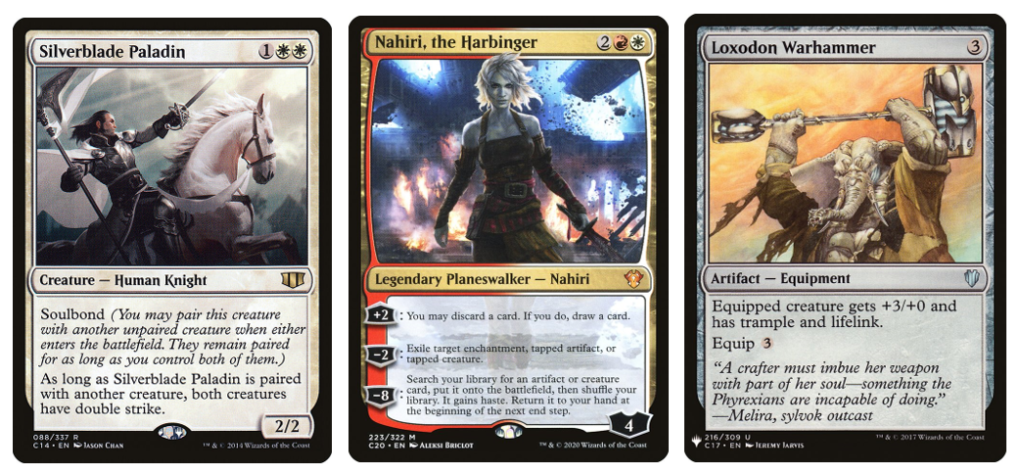
In:

There were a few cards I didn’t get to try out last time, and two of those are Vona, Butcher of Magan and Heartseeker. I’ve since added both, and they’re incredible choices for the deck. When playing Voltron, it’s often one or two permanents that tend to provide the big hurdles, and having repeatable removal is incredible. Heartseeker can be free equipped to Knights and snipe multiple creatures per turn cycle. Vona gives us a decent source of lifegain, and she can Vindicate after she attacks. With a few equipment, that seven life feels like pittance.
Shadowspear is just cheaper than Loxodon Warhammer, and it removes hexproof.
In:

We can’t round out the main additions without covering the new lands Mardu has had access to this year. Syr Gwyn is a deck with variable needs when it comes to mana: plenty of white early, but the need to dip into red and black as soon as possible. While the Pathway lands might not be best suited for this, we did get a Mardu Triome, as well as Boros and Orzhov Battlebond lands, all of which help considerably.
Mardu, Not Boros
In my testing, the biggest takeaway has been that access to black mana really helps make the deck tick. I added Animate Dead to complement Reanimate this time around, and it helps a lot with keeping Syr Gwyn in play — plus, the extra opportunity to take something interesting out of a graveyard is pretty fun.
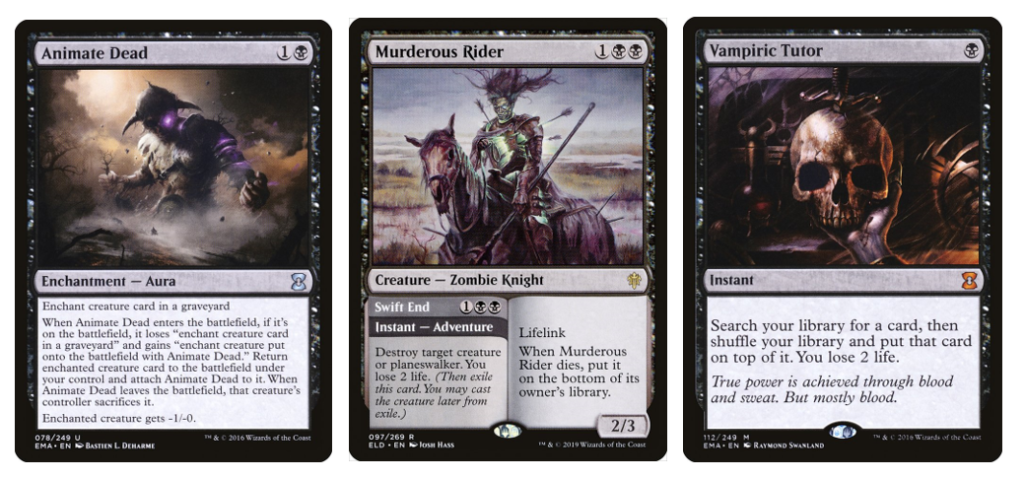
Obviously, the removal suite benefits, too — Murderous Rider’s adventure gives us some card advantage, and the lifelink is surprisingly relevant. I was lucky enough to open a Vampiric Tutor in my Commander Legends packs, and so I added that and a Demonic Tutor in place of Enlightened Tutor and Steelshaper’s Gift. Along with Thalia’s Lancers, Stoneforge Mystic and Sunforger, the deck now has a toolbox feel, which goes a long way to making it feel more viable when sitting across from cheaper, more efficient card advantage engines.
Haste and recursion are still the pillars of the deck, and so many of the cards that fulfill these roles remain the same.
The Verdict
I’ve taken the deck out for some games, and I’m really enjoying how it plays. It still feels clunky and awkward, especially playing such an expensive and fragile strategy, but underneath that, there’s a viable and powerful deck.
I did play some games with Armored Skyhunter, but I think it’s firmly a card that wants to be played in builds that aim for extra combats, which help to balance out the hits and misses. Here I opted for Aurelia, Exemplar of Justice instead, as trample and vigilance are both very strong in Voltron decks.
Syr Gwyn hits like a truck, and having ways to cheat costs helps a lot with keeping the deck rolling. I think for equipment decks to succeed, it’s less about the quality of the cards you run, but ultimately about how much mana you can cheat on. Sigarda’s Aid is a known quantity at this point, but I can’t overstate how powerful Ardenn, Intrepid Archaeologist has been. In a recent game, I had nine of my lands and all of my creatures removed by a copied Din of the Fireherd, but still managed to close the game by playing Ardenn and scooping up all of the equipment lying on the battlefield.
The thing is, though, I think the extra power added to Syr Gwyn by the new cards says more about the new cards than it does about Syr Gwyn’s viability. Adding brisket and pulled pork to a burger might feel like it’s a good move, but you have to ask — is it better to just take the brisket or the pulled pork as your main instead?
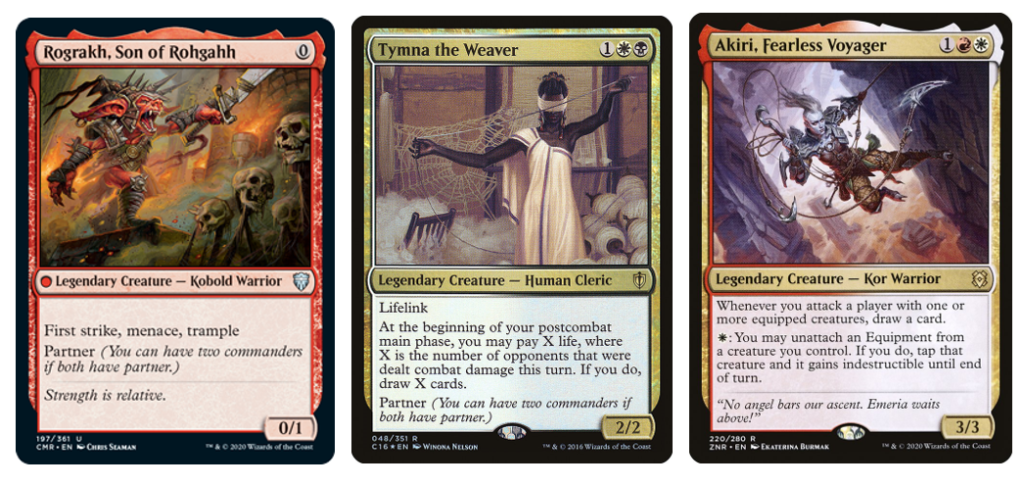
If you still want to be in a Mardu build, you can of course go for Rograkh, son of Rogahh and Tymna the Weaver. This offers you the ability to add black cards to the deck, and exchanges one beefy commander for two cheaper ones that spread keywords and card draw between them.
Ultimately, this kind of deck would look a lot different. For starters, Rograkh natively having trample means the need for evasive equipment is lesser, and so pure buffs are more warranted. I could also see this easily being a deck that cares about tokens, taking creatures like Krenko, Tin Street Kingpin and opting for payoffs like Angelic Exaltation. I’ll probably be brewing up something along this vein to see if it’s viable.

Thinking purely in terms of equipment, running a lower curve also lets us take advantage of Mox Amber, which is practically a Mox Ruby in this build, and Mox Opal, which becomes easier to take advantage of. If you want to push for a more competitive build, in Mardu at least, it might be correct to build with Rograkh and Tymna.
The question then becomes whether you even need to run the black cards. Ardenn is an incredibly powerful card, and having access to him in the Command Zone is an exciting prospect. And then there’s all of the other new partners for Akiri, Line-Slinger — including Jeska, Thrice Reborn, who can set up some blistering turns.
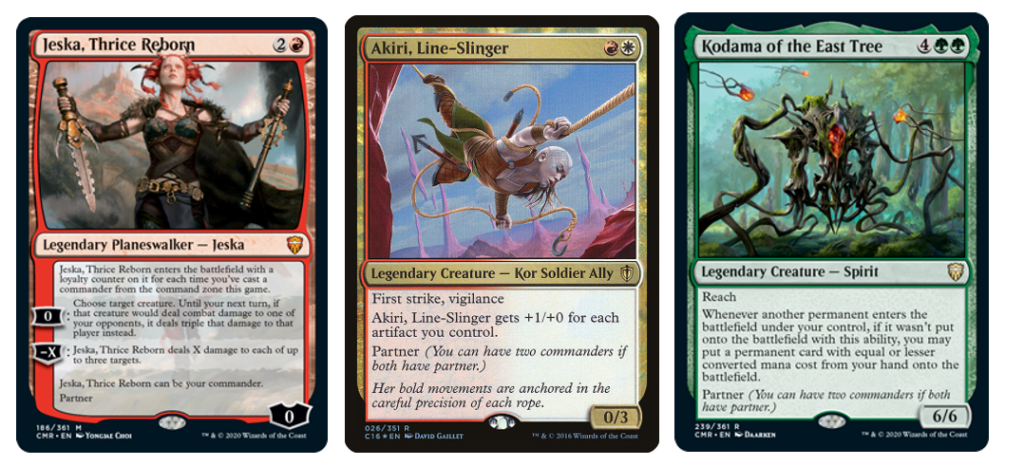
At the end of the day, it comes down to personal taste, and I think that’s a good thing. There are a lot of options when it comes to Voltron these days, and my advice to you is to go with what brings you joy. I find Syr Gwyn cool above all else, and if you do, too? Then run her — you’ll have a great time. There’s a lot to love about the tools she got access to this year, and there’s plenty more that didn’t make the cut.
As I say, though, Voltron has choices now. Ardenn and Kodama of the East Tree is one such option I’m thinking of trying; it gives access to Nazahn, Mirri, Sigarda, and the ability to drop multiple permanents into play per turn.
Despite still having some hurdles that other commanders might not, Syr Gwyn is definitely viable, and a commander I’m glad is still relevant. Have you built Syr Gwyn recently? Do you have an off-the-wall recommendation for a new Voltron commander or partner pairing? Let me know what your thoughts are on Twitter. Until next time, have a great holiday season.

Kristen is Card Kingdom’s Head Writer and a member of the Commander Format Panel. Formerly a competitive Pokémon TCG grinder, she has been playing Magic since Shadows Over Innistrad, which in her opinion, was a great set to start with. When she’s not taking names with Equipment and Aggro strategies in Commander, she loves to play any form of Limited.

